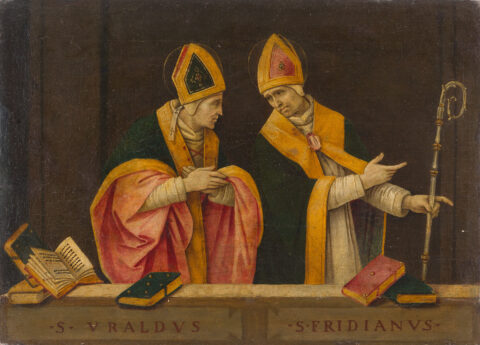Filippino Lippi
Fillipino Lippi was trained by his father, the mater Filippo Lippi, whose assistant he was when he painted the cathedral in Spoleto. When Filippo died in 1469, his son completed the painting and returned to Florence to continue his training with Sandro Botticelli. Fillipino’s works up to about 1480 are under Botticelli’s influence, only after that did he develop his own style. Together with Perugino, Ghirlandaio and Botticelli, he was involved in the painting of Lorenzo de’ Medici’s villa in Spedaletto and was probably commissioned to complete Masaccio’s unfinished frescoes in the Brancacci Chapel in S. M. del Carmine in 1483-84. In 1487 he was commissioned by Filippo Strozzi to paint his family chapel in S. M. Novella with scenes from the lives of John the Evangelist and St. Philip, which he did not complete until 1503. The frescoes are an expression of the conflict between Christianity and paganism in Florence at the time of Savonarola. In between, Lippi went to Rome in 1488, where he painted the Carafa Chapel in S. M. sopra Minerva until 1493. They differ from his early works in their preoccupation with themes and motifs from antiquity, which remains a point of reference in his later works. Probably having returned to Florence between 1491 and 1494, Lippi painted various altarpieces, but also paintings of profane content, and was still active outside Florence, among others in his hometown Prato and in the Certosa di Pavia.


